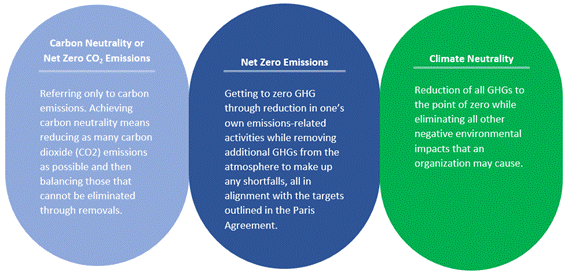



1.jpg) Disclaimer: Copyright infringement not intended.
Disclaimer: Copyright infringement not intended.At the UN Climate Change Conference in 2015 an agreement was reached (The Paris Agreement): to move towards carbon neutrality by the second half of the 21st Century to mitigate the effects of climate change.
Carbon dioxide (CO2) emissions are one of the main causes of climate change. Since the beginning of the Industrial Revolution, humanity has made increasing use of the carbon trapped inside the so-called fossil fuels, i.e., coal, oil and natural gas, which, when burnt, is released in the form of CO2. In May 2019 its concentration in the atmosphere reached record levels: 415 ppm (parts per million).
CO2, together with other greenhouse gases (GHG), traps in solar radiation and warms the surface of the earth. The effects of global warming in the coming decades may be catastrophic: more frequent, severe droughts, extreme storms and heatwaves, rising sea levels, thawing of glaciers, loss of biodiversity and major upheavals in people's lives, leading even to climate migration.
According to the definition of the Intergovernmental Panel on Climate Change (IPCC), carbon neutrality, or net zero CO2 emissions, refers only to carbon dioxide emissions and is a state of balance between the CO2 emitted into the atmosphere and the CO2 removed from the atmosphere.
In actual business practice, organizations often use the term “carbon neutrality” to include all greenhouse gas (GHG) emissions when they announce their ambitious emissions reduction targets.
According to the European Parliament, carbon neutrality is reached when the same amount of CO2 is released into the atmosphere as is removed by various means, leaving a zero balance, also known as a zero carbon footprint. But what exactly do we mean by carbon footprint? This is defined as the total amount of GHG emissions caused by an individual, organisation, service or product.
There are a number of ways of achieving the balance we are talking about. The healthiest way is not to emit more CO2 than can be absorbed naturally by the world's forests and plants, which act as carbon sinks through the process of photosynthesis - they take in CO2 from the air and turn it into oxygen - helping to reduce emissions.
In a statement delivered in 2020, UN Secretary-General António Guterres established the key factors involved in reaching climate neutrality:

While in practice carbon neutrality, net zero and climate neutrality are often used interchangeably, the IPCC provides a clear definition for each term. Net-zero emissions encompasses all GHG emissions, but also refers to balancing the emitted GHGs with the removed GHGs within a certain period of time. Climate neutrality, on the other hand, goes even further and considers all human impacts that affect the climate.

Carbon neutrality can be differentiated from “net zero” and “climate neutrality,” because, on the surface, it technically reflects only carbon. However, in practical terms, when sustainability experts make assertions based on calculations, they often refer to all the GHGs with the term “carbon neutrality,” because they normally convert non-carbon GHGs into carbon equivalencies.
Carbon negative means that an activity goes beyond carbon neutrality by eliminating more CO2 than it emits. Microsoft recently announced that it will be carbon negative by 2030.
Carbon positive: means that an activity releases more carbon into the atmosphere than it removes or compensates for, producing a negative effect for the planet.
The group of experts on the Intergovernmental Panel on Climate Change (IPCC) claims that it is possible to reach carbon neutrality by 2050 and limit global warming to 1.5°C, but they warn that to achieve this target requires unprecedented social and political change. In a recent communication, the UN indicated where we should be heading in the short term:
Set a price for carbon emissions that makes it possible to invest in its removal and in the development of low-emission alternatives, such as renewable energy.
Achieving carbon neutrality is not only the key to avoiding the worst consequences of climate change - it also brings benefits to communities and society as a whole. They include:
© 2025 iasgyan. All right reserved